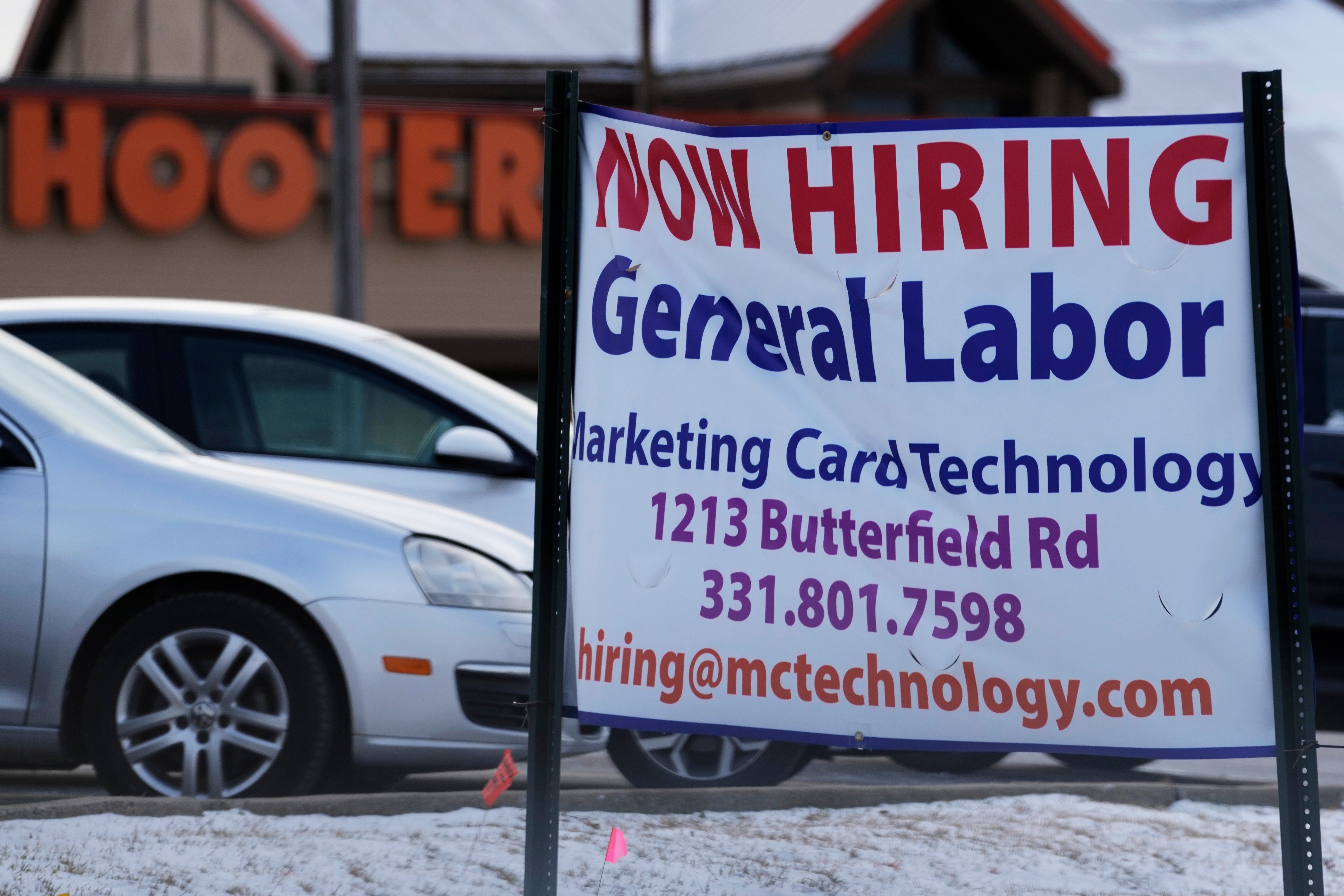More Americans file for jobless claims; layoffs remain low
U.S. applications for jobless benefits rose last week but remain at historically low levels despite the Federal Reserve’s efforts to cool the economy and job market in its fight against inflation

Your support helps us to tell the story
From reproductive rights to climate change to Big Tech, The Independent is on the ground when the story is developing. Whether it's investigating the financials of Elon Musk's pro-Trump PAC or producing our latest documentary, 'The A Word', which shines a light on the American women fighting for reproductive rights, we know how important it is to parse out the facts from the messaging.
At such a critical moment in US history, we need reporters on the ground. Your donation allows us to keep sending journalists to speak to both sides of the story.
The Independent is trusted by Americans across the entire political spectrum. And unlike many other quality news outlets, we choose not to lock Americans out of our reporting and analysis with paywalls. We believe quality journalism should be available to everyone, paid for by those who can afford it.
Your support makes all the difference.U.S. applications for jobless benefits rose last week but remain at historically low levels despite efforts by the Federal Reserve to cool the economy and the job market in its fight against inflation.
Jobless claims in the U.S. for the week ending March 25 rose by 7,000 to 198,000 from the previous week, the Labor Department said Thursday.
The four-week moving average of claims, which evens out some of the week-to-week fluctuations, rose by 2,000 to 198,250, remaining below the 200,000 threshold for the tenth straight week.
Applications for unemployment benefits are broadly seen reflective of the number of layoffs in the U.S.
Last week, the Federal Reserve extended its year-long fight against high inflation by raising its key interest rate by a quarter-point, despite concerns that higher borrowing rates could worsen the turmoil that has gripped the banking system.
Fed Chair Jerome Powell stressed that the central bank remains focused on fighting high inflation, which could require additional rate hikes.
But Powell also signaled that the Fed might not need to impose a lengthy string of increases if more banks were to reduce their lending to conserve cash. This could slow the economy, hiring and inflation, Powell said, which could aid the central bank in its push to cool the economy, labor market and wages, thereby suppressing prices. So far, those things have not happened to the degree that the central bank had hoped.
Inflation remains more than double the Fed’s 2% target, and the economy is growing and adding jobs at a healthy clip.
Last month, the government reported that employers added a substantial 311,000 jobs in February, fewer than January’s huge gain but enough to keep pressure on the Federal Reserve to raise interest rates aggressively to fight inflation. The unemployment rate rose to 3.6%, from a 53-year low of 3.4%.
In its latest quarterly projections, the Fed predicts that the unemployment rate will rise from its current 3.6% to 4.5% by year’s end, a sizable increase historically associated with recessions.
Though the U.S. labor market remains strong, layoffs have been mounting in the technology sector, where many companies hired aggressively during the pandemic. IBM, Microsoft, Salesforce, Twitter and DoorDash have all announced layoffs in recent months.
Amazon said last week that it would cut another 9,000 positions, adding to the 18,000 employees the tech giant said it would lay off in January.
Earlier this month, Facebook parent Meta said it was slashing another 10,000 jobs in addition to the 11,000 culled in November.
The real estate sector has taken the biggest hit from the Fed’s interest rate hikes. Higher mortgage rates — now at 6.42% — had slowed home sales for 12 straight months before February’s 14.5% improvement.
About 1.69 million people were receiving jobless aid the week that ended March 18, an increase of 4,000 from the week before. That number is close to pre-pandemic levels.